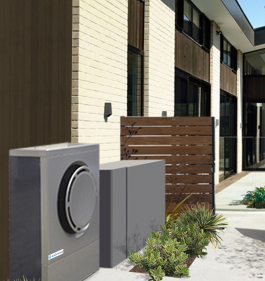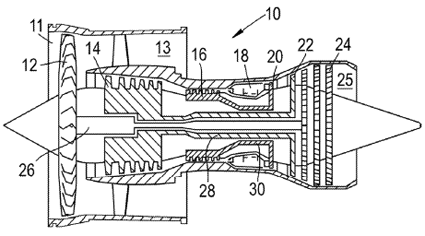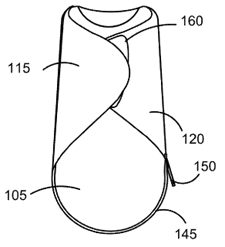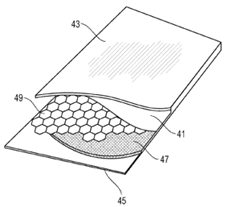 The Phase Change Matters e-mail newsletter is a weekly summary of the latest news and research on phase change materials and thermal energy storage. To subscribe, visit www.puretemp.com/subscribe. For more frequent updates, follow @puretemp on Twitter or visit the Phase Change Matters blog, www.puretemp.com/pcmatters.
The Phase Change Matters e-mail newsletter is a weekly summary of the latest news and research on phase change materials and thermal energy storage. To subscribe, visit www.puretemp.com/subscribe. For more frequent updates, follow @puretemp on Twitter or visit the Phase Change Matters blog, www.puretemp.com/pcmatters.
HVAC
New ice-based AC system is aimed solely at residential market
Earlier this year, Ice Energy launched the Ice Bear 20, a smaller version of the commercial-scale Ice Bear 30 thermal energy storage system. Next year, the Glendale, Calif., company plans to launch the Ice Cub, a still-smaller system aimed solely at the residential market.
 All three units are designed to cut energy costs by producing ice during off-peak hours and storing it in an insulated tank. During peak hours, the stored ice delivers three to four hours of cooling, reducing the typical peak load by 95 percent. The Ice Cub can switch from conventional AC to using the ice to cool a house for at least three hours. During that time no electricity is needed to chill the air.
All three units are designed to cut energy costs by producing ice during off-peak hours and storing it in an insulated tank. During peak hours, the stored ice delivers three to four hours of cooling, reducing the typical peak load by 95 percent. The Ice Cub can switch from conventional AC to using the ice to cool a house for at least three hours. During that time no electricity is needed to chill the air.
The Ice Bear 30, designed for large industrial and commercial buildings, connects to existing air-conditioning units, chilling the air that pumps through the AC compressor. The Ice Bear 20, designed for large residential and light industrial buildings, completely replaces AC units, as will the new Ice Cub, shown above.
Initial sales efforts will be focused on California, to take advantage of subsidies available there, but the Ice Cub will be available “anywhere people want it,” said Ice Energy CEO Mike Hopkins. He said the base price is likely to be close to that of a high-efficiency air conditioner, about $5,000 installed. But with money from California’s Self-Generation Incentive Program, the price will be closer to that of a conventional AC, perhaps less, depending on production scale. A typical household paying time-of-use rates, Hopkins tells Greentech Media, would save $500 a year on its electric bill.
The company is now taking orders for the Ice Cub, which will be manufactured in New York at a plant that can make 1,000 Ice Cubs a month, Hopkins said. He said Ice Energy will be able to keep costs down thanks to Danfoss, a Danish heating and cooling parts maker that has agreed to supply manufacture-ready components.
Danfoss has “been very helpful,” Hopkins said, “and we like the quality of their parts. Their hope is that they will be our primary parts supplier when this product takes off. However, there is no exclusivity.”
SOLAR
BrightSource among 20 projects chosen for gigawatt-scale solar demo in China
CleanTechnica reports that BrightSource Energy’s 135-megawatt Delingha tower is one of only 20 projects selected by the Chinese government for a pilot program aimed at jumpstarting dispatchable solar. BrightSource’s concentrated solar power system will use molten salt thermal energy storage. The Delingha project, in Qinghai Province, northwest China. is now fully permitted and ready to begin construction.
CleanTechnica writes:
“To facilitate molten salt-based energy storage, the receiver will first heat the molten salts directly in the tower. This will make Delingha more akin to the technology pioneered by SolarReserve at the 110 MW Crescent Dunes, and at SENER’s 20 MW Gemasolar, based on the research from RocketDyne scientists who now work at SolarReserve.”
PATENTS

Gas turbine engine fluid heat management system
U.S. patent application 20160281603 (applicant Rolls-Royce PLC, Great Britain):
“A fluid heat management system for an aircraft gas turbine engine. The system includes an oil to air heat exchanger configured to transfer heat from engine oil to bypass air, an oil to fuel heat exchanger configured to transfer heat from engine oil to fuel, and a phase change material in thermal contact with the oil upstream of the oil to fuel heat exchanger. The phase change material has a phase change temperature at a predetermined fuel target temperature.”
Temperature maintenance covering or apparel for children
U.S. patent application 20160295928 (applicant Embrace Technologies Inc., San Francisco, Calif.):
 “A baby temperature maintenance device is designed to regulate the temperature of a baby while providing a caretaker access to a lower portion of the baby without disturbing the baby. The baby temperature maintenance device includes a first panel of fabric, a second panel of fabric, a lower securing mechanism, and a plurality of upper securing mechanisms. The lower portions of the panels are fastened together with a lower securing mechanism that can be zipped open or closed. The upper portions of the panels are fastened together with upper securing mechanisms that fasten over each of the baby’s shoulders. … These insulating fabrics may include Outlast Thermocules, any other suitable phase change materials (PCM), or any other suitable fiber that adjusts to body temperature and maintains the body at a set temperature. The inner layer can be a material that ensures that the baby within the sleeping bag and touching the material of the inner layer maintains a temperature in the range of 97-100.3º F.”
“A baby temperature maintenance device is designed to regulate the temperature of a baby while providing a caretaker access to a lower portion of the baby without disturbing the baby. The baby temperature maintenance device includes a first panel of fabric, a second panel of fabric, a lower securing mechanism, and a plurality of upper securing mechanisms. The lower portions of the panels are fastened together with a lower securing mechanism that can be zipped open or closed. The upper portions of the panels are fastened together with upper securing mechanisms that fasten over each of the baby’s shoulders. … These insulating fabrics may include Outlast Thermocules, any other suitable phase change materials (PCM), or any other suitable fiber that adjusts to body temperature and maintains the body at a set temperature. The inner layer can be a material that ensures that the baby within the sleeping bag and touching the material of the inner layer maintains a temperature in the range of 97-100.3º F.”
Thermal energy management in a roof
U.S. patent application 20160289969 (applicant Certainteed Corp., Malvern, Pa.):
 “A roof product has a thermal heat storage layer, a vent layer with channels for transferring excess heat through a length of the roof product, and a flame retardant to suppress fire through the vent layer. These three materials form a unitary structure. The roof product may have a radiant layer, the thermal heat storage layer and the vent layer to form the unitary structure. The roof products are assembled in an abutting configuration on the roof of a building. The vent layer vents excess heat from an eave of the roof up to a ridge of the roof and out to atmosphere. The roof products manage thermal energy in the roof by storing thermal heat with the unitary roof product during a heating cycle; venting excess heat through the unitary product; and releasing the stored thermal heat from the unitary product into or out of the building during a cooling cycle.”
“A roof product has a thermal heat storage layer, a vent layer with channels for transferring excess heat through a length of the roof product, and a flame retardant to suppress fire through the vent layer. These three materials form a unitary structure. The roof product may have a radiant layer, the thermal heat storage layer and the vent layer to form the unitary structure. The roof products are assembled in an abutting configuration on the roof of a building. The vent layer vents excess heat from an eave of the roof up to a ridge of the roof and out to atmosphere. The roof products manage thermal energy in the roof by storing thermal heat with the unitary roof product during a heating cycle; venting excess heat through the unitary product; and releasing the stored thermal heat from the unitary product into or out of the building during a cooling cycle.”
IN BRIEF
• A SpecialChem online course, “U.S. Patents: How to Avoid Infringement Issues,” is set for 10 a.m. EDT Tuesday. The 90-minute course is designed for “R&D people who need to become familiar with patent searching and mapping.” The cost for up to three participants on one connection is 290 euros.
• New market research from Technavio: “Global Baby Warming Devices Market 2016-2020.” Embrace, a nonprofit company that introduced a PCM-based warmer in India in 2011, is among the vendors listed in the report, which projects a compound annual growth rate of 8.74 percent for the sector.
• EnergyNest of Norway has turned to crowdfunding to finance development of its concrete-based thermal energy storage system.
• A University of British Columbia study shows that snow cleared from winter roads can help reduce summer air-conditioning costs.
• Axiom Exergy of Richmond, Calif., has been granted a U.S. patent for its PCM-based “direct expansion” thermal energy storage system designed for supermarket refrigeration and commercial HVAC markets.
• The venture fund Breakout Labs has invested an undisclosed amount of money in Seatrec of Pasadena, Calif. Seatrec makes a battery designed to power underwater research vessels. The battery is packed with phase change materials that expand and contract as ocean temperatures fluctuate. The volume change generates high pressure that is stored and subsequently used to drive a small electric generator.
• A symposium on PCM use in buildings will be held Oct. 19-20 at the University of Kassel in Germany. The registration deadline has passed, but some free places are still available. Presenters include Helmut Weinläder of ZAE Bayern, Felix Pawelz of Rubitherm and Bernd Döring of FH Aachen University of Applied Sciences. The sessions will be conducted in German. For more information, contact Michaela Reim at michaela.reim@zae-bayern.de.
RESEARCH ROUNDUP
For our full list of recent academic research, see puretemp.com/academic. Here are highlights from the past week:
From Applied Thermal Engineering:• Composite of Wood-Plastic and Micro-Encapsulated Phase Change Material (MEPCM) Used for Thermal Energy Storage
• Thermal properties of beeswax/graphene phase change material as energy storage for building applications
From International Journal of Heat and Mass Transfer:
• Experimental study on phase change heat transfer characteristics of alloys
From Energy and Buildings:
• Applied Machine Learning: Forecasting Heat Load in District Heating System
• Utilization of lauric acid-myristic acid/expanded graphite phase change materials to improve thermal properties of cement mortar
From Case Studies in Thermal Engineering:
• Melting inside a horizontal cylindrical capsule
From Solar Energy Materials and Solar Cells:
• Synthesis and thermal properties of novel sodium nitrate microcapsules for high-temperature thermal energy storage
• Materials selection of steam-phase change material (PCM) heat exchanger for thermal energy storage systems in direct steam generation facilities
• Characterization of different sugar alcohols as phase change materials for thermal energy storage applications
From Applied Energy:
• Natural convection in high temperature flat plate latent heat thermal energy storage systems
From International Conference on Electronic Packaging Technology:
• Experimental investigation of paraffin wax with graphene enhancement as thermal management materials for batteries
From Solar Energy:
• Experimental investigations on heat content of supercooled sodium acetate trihydrate by a simple heat loss method
From Construction and Building Materials:
• Optimizing mix proportion and properties of lightweight concrete incorporated phase change material paraffin/recycled concrete block composite
NETWORKING
Connect with PCM experts and industry leaders on LinkedIn
More than 900 of your peers have joined a LinkedIn group devoted to the discussion of phase change material and thermal energy storage. The Phase Change Matters group is an interactive complement to the award-winning blog and newsletter of the same name.
You are invited to join the group and connect with PCM and TES experts from around the world. New members this week include Harald Huth of 3D Bauphysik Huth GmbH; Switzerland; Arash Bastani, a researcher at CanmetENERGY, Canada; Kyle Loerakker, owner/account manager at Duraflow, Netherlands; and Chiranjeev Kalra, pod engineer manager at Hyperloop Tech, Los Angeles.